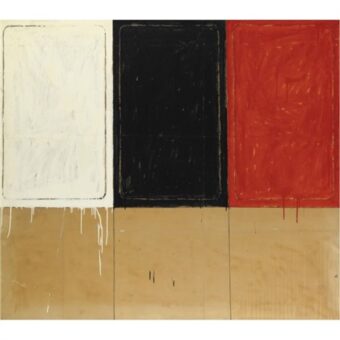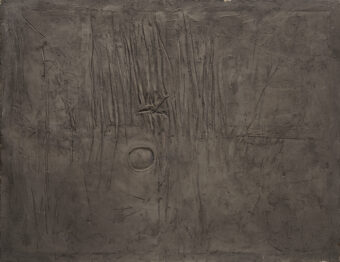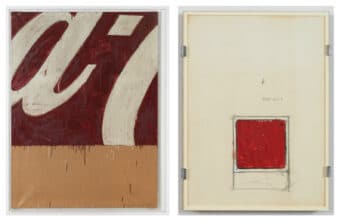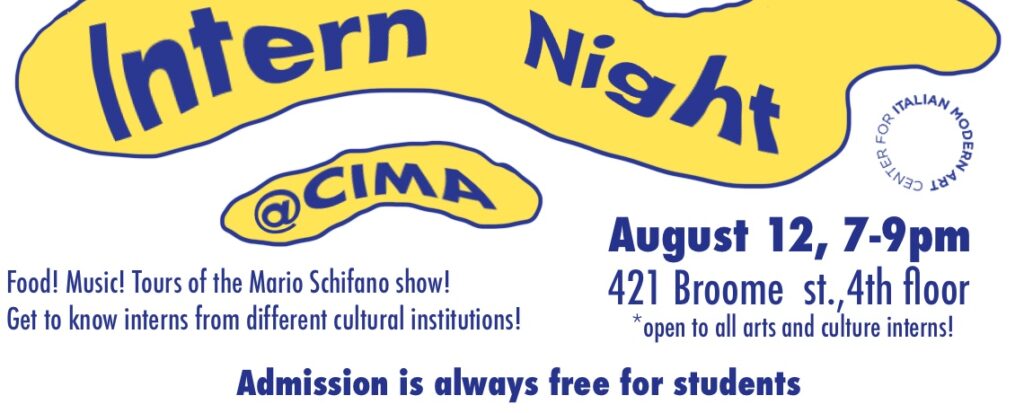July 29th is national intern appreciation day, an opportunity to recognize all the work interns do for businesses across America. CIMA holds seasonal internships for current and recently graduated students to gain first-hand experience working in a nonprofit exhibition and research center. Here at CIMA, we are extremely grateful for all the work our interns do to support our staff and contribute to our institution’s mission.
In celebration of national intern day, today we are spotlighting our interns’ favorite works of art from our current exhibition, “Facing America: Mario Schifano, 1960-65”. We will officially celebrate the end of summer internships on August 8th with a special evening event open to all interns of artistic and cultural institutions! We hope this will be a unique opportunity for interns across the five boroughs with a shared interest in art to meet and commemorate their summer in the city with an evening of Italian aperitivo, music and conversation. RSVP here!
Read on to meet this year’s interns and learn more about a small selection of works from Schifano’s early painting career.
Gizelle Greeley Winter, CIMA’s Summer 2021 Intern
My personal favorite Schifano piece is “La stanza dei disegni,” which synthesizes some of his most iconic motifs: collage technique, monochrome enamel, unpainted bottom layer, and rounded-rectangles. There’s something so deliciously meta about a picture painted in honor of picture frames and paintings themselves… especially one that is so unorthodox in its construction!

Daniel Lowe, CIMA’s Summer-Fall 2021 Intern
My favourite piece in CIMA is Schifano’s 1959 work, titled Pittura. The work, which Schifano created by painting cement onto a canvas, makes one reflect on the role cement has had in creating our contemporary urban environment. In postwar Italy, millions of tonnes of cement were poured onto countrysides and coastlines to make cheap summer homes and ugly suburbs (this impacted the collective Italian psyche so greatly that a new term, cementificazione, was coined to describe the phenomenon). The “unspoiled” landscape has played a cardinal role in the literary and artistic traditions of Italy for centuries: Petrarch climbed Mont Ventoux, Leopardi yearned for the infinitude past the shrubs of a lonely hillside, and rolling Tuscan hills were ubiquitous in the works of many Renaissance artists. While some figures contemporary to Schifano (like Pier Paolo Pasolini) railed against cement due to its ability to ruin the distinctive beauty of Italian towns and landscapes, I don’t see Schifano’s work as opposed to cementificazione. Rather, by framing the cement and presenting it as an aesthetic object, as art, Schifano seems to praise its ability to rase tradition (and therefore antiquity) to the ground. I read Schifano’s choice to “paint” with cement as a radical rejection of traditional artistic materials, and of the traditional bond artists had with nature.

Clara Maria Apostolatos, CIMA’s Spring 2021 Intern
There are two pieces in the Schifano exhibition that I particularly love because of their distinctive Pop imagery and pithy and polysemantic titles. Now one of the most recognisable iconographies of American pop art, the Coca-Cola logo was appropriated by Mario Schifano in the early 1960s as a symbol of capitalism and consumerism. The title of the painting “Grande particolare di propaganda” can be translated to “large detail of advertisement” or political “propaganda”. The wordplay here suggests that Schifano is making a larger statement about the increased presence of American products and capitalist culture in Italy. The mass promotion of Coca-Cola products furthers two agendas: as an advertisement campaign it encourages people to buy Coca-Cola products, while also advancing American economic expansion into Europe. The postwar change in cultural values and Italian popular culture is also reflected in Schifano’s “KoKa Kola.” By phonetically alluding to the Italian pronunciation of the brand name, it serves perhaps as a statement of the product’s naturalization into the Italian language and culture.


